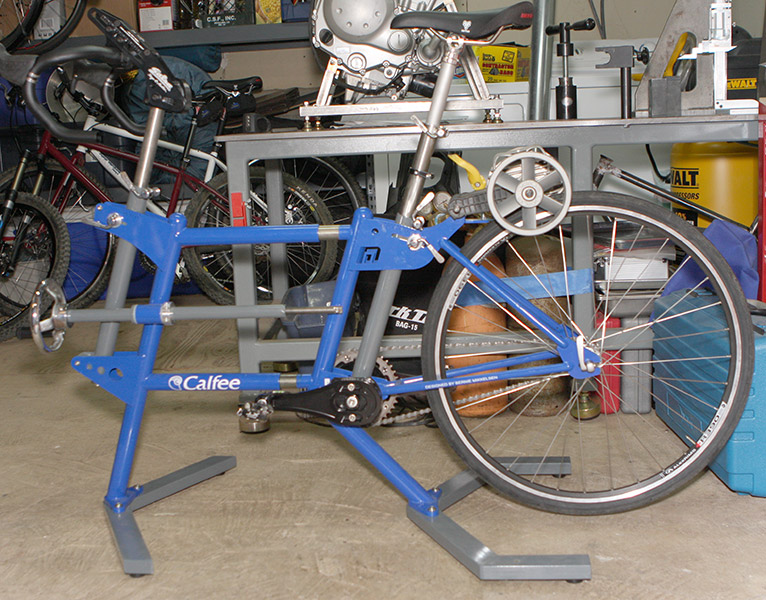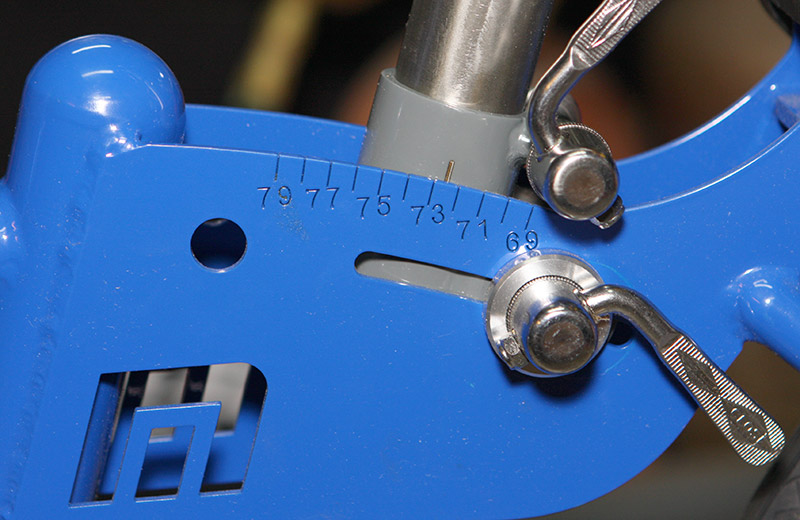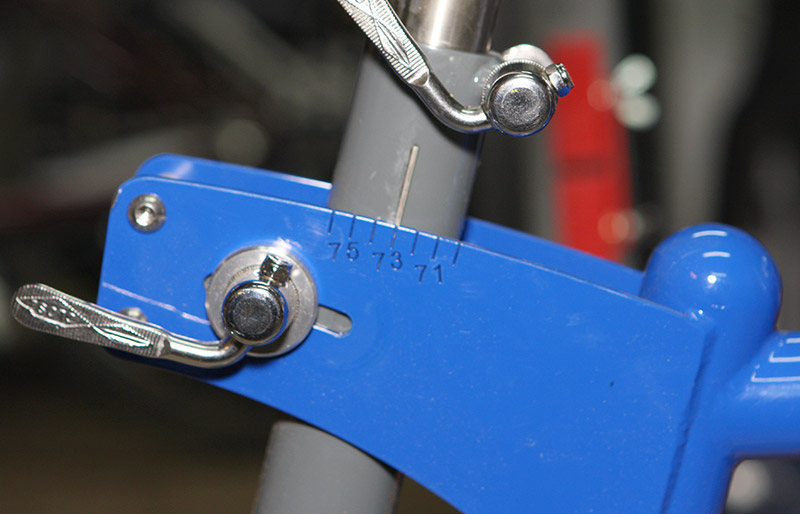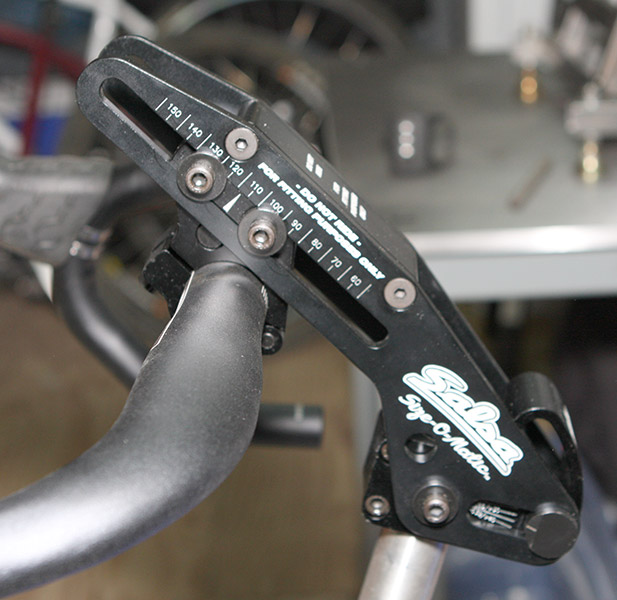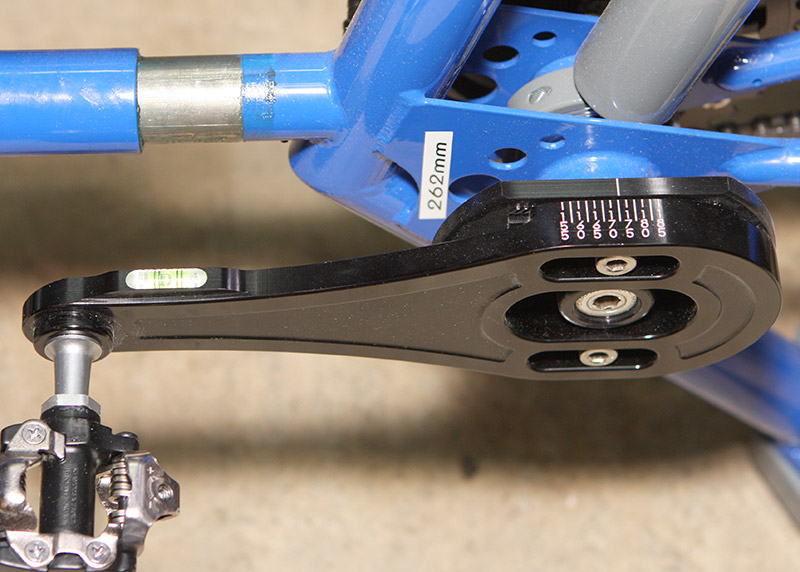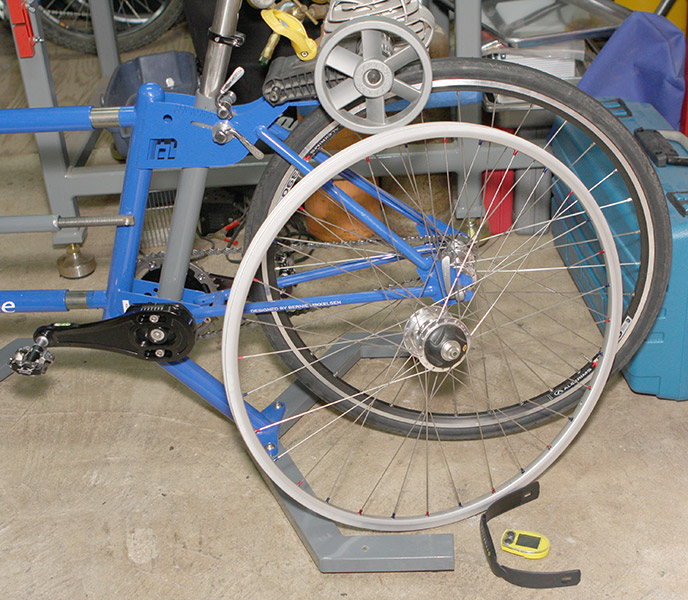Bicycle Fitting and Sizing
Contents
Why Fit
Different Philosophies
Serotta
Serotta has been a leader in bicycle fit for quite a while. The established the Serrotta Cycling Institute to further the goals of a better understanding of bike fit.
Fit Bikes
- Calfee Sizer Cycle
- Waterford Fitmaster
- Serotta Fit Bike
- San Giorgio Fig Jig
- Tiemeyer Cycles Position Cycle
My fit bike
I got myself one of the Calfee/Mikkelson Sizer Cycles. Fun!!! I also have a PowerTAP rear wheel for it to measure power gains in different postitions.
Goniometers
http://en.wikipedia.org/wiki/Goniometer
A goniometer is used to measure the angle of the knee as well as other joints on the body when doing a fit. The goniometers that are sold throught medical channels are just too short to get good results. You need between 18" and 24". I have found a couple of very good alternatives.
Quint Measuring Systems, Inc. P.O. Box 280, San Ramon, CA 94583 (800)745-5045 http://www.quintmeasuring.com/
- 24" True Angle Tool - Contractor Grade (Heavy-Duty)
- 18" True Angle Tool
- 4" Attachable Dial
- 7" Attachable Dial
I got the 24" version because it is more rugged and thicker.
Kits
- Retul, 3D computer anylisis
- Fit Kit
- Bikefitting.com
- Bike Fit Systems
- Accufit by Bill Boston
Local Fitters
- NorCal Cycling in Santa Rosa. $75. They do a pretty good job. Much better than the average bike shop in the bay area. This is where I send most people that need a basic fitting.
- Whole Athelete, San Anselmo, CA, $220-295
- Craig Upton of Performance Lab HC , $150
- PK Racing, in Fairfax. $450-500. Primarily pro road/tri experts. They are very expensive and I have no personal experience with them other than the fact that they are only 3 blocks from my house.
- Cycle Sport, in Oakland. $125
- AriaVelo, in Santa Rosa.
- HyperCat Racing, SF
or search Serotta by zip code
Links
- Ergo Bike Competition Bicycle Size/ Proportions Analysis By Edward C. Zimmermann
- Jack's Bikes - A fit kit walk through
- Cyclemetrics link page
- Pruitt
- Steve Hogg
A cool poster from Ritchey Logic: http://ritcheylogic.com/media/File/5022_FIT_LOGIC_POSTER_090909lowres.pdf
Some Traditional Numbers
Weight Distribution
- Road:
- In drops decending: 45% Front / 55% Rear
- On tops climbing: 40% Front / 60% Rear
- On hoods, out of saddle, sprinting: 50% Front / 50% Rear
- MTB:
For trail I prefer a setup that sets the rider as far back as possible while maintaining control on steepest climb without too much fussing.
Fox racing shox recomends 55% for X-Country, 65% for Freeride, and 70% for Downhill.
When designing a frame from scratch, wheel offset from BB along wheelbase can be used as a ballpark start. Road - 58.5%F/41.5%R, Trailbike - 61%F/39%R, MTB Race 60%F/40%R.
Cleat Position
"5. Make sure that the ball of your foot [centre of the first metatarsal joint] is in front of the pedal axle with the crank arm forward and horizontal. For a rough guide for shoe size metric 36 - 38, 7mm in front; 39 - 41, 8mm in front; 42 - 43, 9mm in front; 44 -45, 10mm in front. It is unlikely that your feet are bigger than that. Don't forget to move the right cleat further back again as outlined in point 3. I know that this is at variance with the commonly given advice but you will find as you try it that it works."
http://www.cyclefitcentre.com/pdf%20final%20docs/SHOE%20AND%20PEDAL%20ARTICLE%208_final.pdf
http://www.cyclingnews.com/fitness/?id=2004/letters07-26#Cleat
http://www.cyclingnews.com/fitness/?id=2004/letters10-11#Ball
Crank Length
39.5% of femur length.
- L(mm) = 2.16% x I(mm)
- http://www.polaris.net/palmk/crankset.html
- "As a matter of fact, a large, persistent drop in cadence is usually a good indication that the crank is, in fact, too long."
- 2.10% for taller riders
Popular Guides Height Inseam Cranklength
- under than 5' <=70 cm. 165
- 5' to 5'2" <=74 cm. 167.5
- 5'2" to 5'7" <=80 cm. 170
- 5'7" to 6' <=86 cm. 172.5
- 6' to 6'5" <=93 cm. 175
- taller than 6'5" <=99 cm. 177.5 - 180.0
Traditional Recomendations Height Inseam Cranklength
- under 5'7" 74 to 80 cm. 170
- 5'7" to 6' 81 to 86 cm. 172.5
- Over 6' longer than 87 cm 175
http://www2.bsn.de/Cycling/cranks.html
18.5% from top of femur to floor.
Inseam:
- < 29 inches - 165 mm crank
- 29 - 32 inches - 170 mm crank
- 32 - 34 inches - 172.5 mm crank
- > 34 inches - 175 mm crank
Frame Size:
- 54 cm or less, 170 mm
- 55 - 58 cm, 172.5 mm
- 59 cm or greater, 175 mm
- Gonzalez and Hull, Bivariate optimization of pedaling rate and crank arm length. Journal of biomechanics 1988, vol. 21, no10, pp. 839-849
- Danny Too; Gerald E. Landwer, The effect of pedal crank arm length on joint angle and power production in upright cycle ergometry. Journal of Sports Sciences, Volume 18, Issue 3 March 2000 , pages 153 - 161
Knee Angle
30-35 Degrees. More bend conserves more energy, less bend for more power.
31-32 is optimum.
Saddle Height
- Inseam (with cycling shoes) x 0.883 = Top of the saddle to the center of the bottom bracket. (beware oversized feet using this)
- Inseam (with cycling shoes) x 1.09 = Pedal spindle to top of saddle with pedal parallel to seat tube.
- LeMond Method - Adjust the saddle to a distance equal to your PBH* x .883, measured from the top of saddle to the center of the bottom-bracket
- Petersen Method - Adjust the saddle to a distance equal to your PBH x .873, measured from the top of saddle to the center of the bottom-bracket
- Hamley Method - Adjust the saddle to a distance equal to your PBH x 1.09, measured from the top of saddle to the pedaling surface (with the crank at bottom-dead-center inline with the seat tube)
- Holmes Method - Adjust the saddle so your knee is bent 25-35 degrees with the ball of your foot on the pedal (with the crank at bottom-dead-center inline with the seat tube)
Trunk Angle
About 30-40 degrees from level. (45 at most)
Shoulder Angle
90-100 degrees.
Elbow Bend
15 degrees
Stem Length
- When in drops, axle obscured by bars.
- With arms bent 15 degrees in drops, plumb line from nose bisects stem at bars.
Handlebar Height
- 1-2 inches below the saddle for small riders
- up to 4 inches for taller riders.
